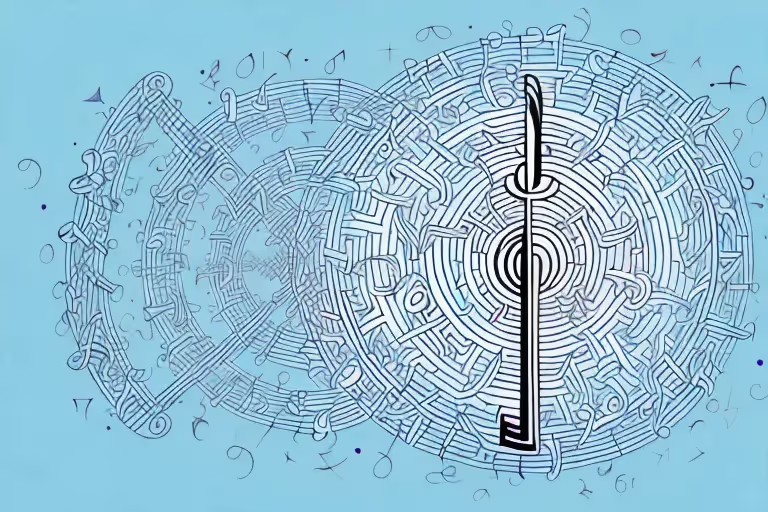Dream meditation is a fascinating practice that allows us to delve into the depths of our subconscious mind and explore the vast inner realms of our dreams. With its multiple stages, dream meditation offers a unique approach to self-discovery and spiritual growth. In this article, we will delve into the various aspects of dream meditation, from understanding its concept to exploring its potential benefits and techniques for effective practice.
Understanding Dream Meditation
The concept of dream meditation is rooted in the belief that dreams hold valuable insights and messages from our subconscious mind. By incorporating meditation techniques into our dream experiences, we can harness the power of our dreams for personal growth and transformation. This powerful combination of dreaming and meditation opens up a whole new dimension of self-exploration.
The Concept of Dream Meditation
Dream meditation involves actively engaging with our dreams while maintaining a state of meditative awareness. It is a practice that helps us bridge the gap between our waking and dreaming states, allowing us to consciously navigate the dream realm.
When we practice dream meditation, we enter a state of deep relaxation and focus, similar to traditional meditation. However, instead of solely focusing on our breath or a specific mantra, we direct our attention to the content of our dreams. By doing so, we can explore the symbolism, emotions, and messages within our dreams, gaining valuable insights into our subconscious mind.
During dream meditation, we strive to maintain a sense of mindfulness and presence, even within the dream world. This heightened awareness allows us to observe our dreams without getting lost in them, enabling us to consciously interact with the dream environment and its characters. By maintaining this meditative state, we can actively shape the direction of our dreams and explore them with intention.
The Connection Between Dreams and Meditation
On the other hand, the connection between dreams and meditation runs deep. Both processes involve entering altered states of consciousness, where we can tap into our intuition and access deeper layers of our psyche. Dream meditation uses the dream state as a platform for mindfulness, self-reflection, and inner exploration, enhancing the benefits of traditional meditation practices.
When we meditate, we often strive to quiet the mind and detach from our thoughts. Similarly, in dreams, we experience a natural detachment from our waking reality, allowing our subconscious mind to take center stage. By combining the two practices, we can tap into the rich symbolism and hidden meanings within our dreams, bringing them into our conscious awareness.
Through dream meditation, we can explore unresolved emotions, fears, and desires that may be lurking beneath the surface of our conscious mind. By delving into the depths of our dreams, we can gain a deeper understanding of ourselves and our inner world. This process of self-exploration can lead to personal growth, healing, and transformation.
Furthermore, dream meditation can also enhance our overall meditation practice. As we become more skilled at maintaining a meditative state within our dreams, we develop a greater ability to stay present and focused during our waking meditation sessions. This transfer of skills between the dream and waking states strengthens our overall mindfulness practice, allowing us to cultivate a deeper sense of peace and clarity in our daily lives.
In conclusion, dream meditation is a powerful practice that combines the insights and messages of our dreams with the mindfulness and self-reflection of traditional meditation. By actively engaging with our dreams while maintaining a meditative state, we can unlock the hidden wisdom within our subconscious mind and embark on a journey of self-discovery and transformation.
The Stages of Dream Meditation
Embarking on the journey of dream meditation involves traversing through multiple stages. Each stage serves a distinct purpose and contributes to a comprehensive dream meditation practice.
Initial Stage: Relaxation and Preparation
Before delving into the realm of dreams, it is crucial to prepare our mind and body for the journey ahead. This stage includes relaxation exercises, deep breathing, and setting clear intentions for the dream experience.
During the relaxation exercises, it is important to find a comfortable position, whether it be lying down or sitting in a chair. As we close our eyes, we begin to let go of the tensions and worries of the day, allowing our body to sink into a state of deep relaxation. We focus on our breath, inhaling deeply and exhaling slowly, allowing each breath to bring a sense of calm and tranquility.
Setting clear intentions is another vital aspect of the initial stage. By clearly defining what we hope to achieve or explore in our dreams, we create a roadmap for our subconscious mind to follow. This helps to guide our dream experiences and ensures that we make the most of our time in the dream realm.
Intermediate Stage: Entering the Dream State
Recent data shows that the intermediate stage is where we transition from wakefulness to the dream state. Techniques like reality checks, lucid dreaming induction methods, and visualization help us bridge the gap between the waking and dreaming worlds, allowing us to enter the realm of dreams with heightened awareness.
Reality checks play a crucial role in this stage. By regularly questioning the nature of our reality throughout the day, we train our mind to do the same while we are dreaming. This increases the likelihood of becoming lucid within the dream, where we are aware that we are dreaming and can actively participate in shaping the dream narrative.
Lucid dreaming induction methods, such as keeping a dream journal, performing reality checks, and practicing meditation, can greatly enhance our ability to enter the dream state consciously. These methods help to strengthen our dream recall and increase our overall dream awareness.
Visualization is another powerful technique that aids in entering the dream state. By visualizing a desired dream scenario or setting before falling asleep, we create a mental blueprint that our subconscious mind can follow. This visualization acts as a bridge that connects our waking consciousness to the dream realm, making it easier to transition into the world of dreams.
Advanced Stage: Navigating the Dream Realm
Once immersed in the dream state, we can explore the depths of our dreamscape and tap into its vast potential. This stage involves maintaining a state of presence and mindfulness within the dream, engaging with dream characters, and unraveling the symbolic meanings embedded within the dream narrative.
Maintaining a state of presence and mindfulness within the dream is essential for fully experiencing and understanding the dream's messages. By staying aware and attentive, we can actively engage with the dream environment, interact with dream characters, and explore the dream's landscapes with heightened clarity.
Dream characters often serve as mirrors, reflecting different aspects of ourselves or representing unresolved emotions and desires. Engaging with these characters can provide valuable insights and help us gain a deeper understanding of our subconscious mind.
The dream narrative itself is filled with symbolic meanings that can offer profound insights into our waking life. By analyzing the symbols, themes, and events that unfold in our dreams, we can gain a deeper understanding of ourselves, our emotions, and our life circumstances.
As we navigate the dream realm, it is important to approach each dream with curiosity, openness, and a willingness to learn. By embracing the journey and fully immersing ourselves in the dream experience, we can unlock the transformative power of dream meditation.
Benefits of Dream Meditation
Dream meditation offers a multitude of benefits for our overall well-being and personal growth. By integrating dream exploration and meditation, we can experience profound transformations in various aspects of our lives.
Mental Health Advantages
Dream meditation supports our mental health by providing a platform for self-reflection and processing unresolved emotions. Engaging with dreams in a meditative state allows us to gain insights into our subconscious mind, identify patterns, and release emotional baggage, leading to greater emotional balance and inner peace.
Spiritual Growth Through Dream Meditation
Dream meditation is not limited to psychological benefits; it also holds tremendous potential for spiritual growth. By connecting with our dreams on a deeper level, we can gain access to spiritual insights, receive guidance from our higher self, and cultivate a sense of interconnectedness with the universe.
Techniques for Effective Dream Meditation
To make the most out of our dream meditation practice, it is essential to incorporate effective techniques that enhance our dream experiences and facilitate self-discovery.
Pre-sleep Techniques
Before drifting off to sleep, we can engage in activities that promote a receptive mindset, such as journaling, setting intentions, and practicing relaxation exercises. These pre-sleep techniques help to create a conducive environment for meaningful dream experiences.
Techniques During Sleep
During sleep, techniques like reality checks, reality testing, and active dream engagement can be employed to increase lucidity and maintain a state of mindfulness within the dream realm. These techniques enable us to actively participate in the dream narrative and extract valuable insights.
Overcoming Challenges in Dream Meditation
Like any practice, dream meditation comes with its fair share of challenges. However, with perseverance and the right mindset, these challenges can be overcome, allowing us to fully embrace the transformative potential of dream meditation.
Dealing with Distractions
Distractions during dream meditation can hinder our ability to stay focused and conscious within the dream state. However, by practicing mindfulness and cultivating a calm and centered mindset, we can learn to navigate through distractions and remain present within the dream realm.
Handling Fear and Anxiety in Dream Meditation
Fear and anxiety can arise during dream meditation, especially when exploring the depths of our subconscious. it is imperative to approach these emotions with compassion and curiosity. By acknowledging and exploring our fears, we can transcend them and continue our journey towards self-discovery.
Despite the challenges, the rewards of dream meditation are immeasurable. By incorporating dream meditation into our daily routine, we can unlock the hidden potential of our dreams and embark on a transformative journey of self-discovery. Start exploring the inner realms of your dreams with the Aura Health App and unlock a world of possibilities.
Aura is Your All In One App for Meditation, Mindfulness Wellbeing
Find peace every day with one app for your whole well-being. There is no one-size-fits-all solution to mental well-being. Aura is the first all-in-one wellness app that learns how to best help you. Discover an endless library of expert-created tracks for your well-being, all taught by the world’s best coaches, therapists, and storytellers. With Aura's personalized recommendations, you can find peace every morning, day and night.



.webp)






.avif)

%20(1).avif)


.avif)
.avif)
.webp)


.avif)


















































































































.avif)

















.svg)









